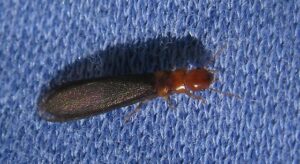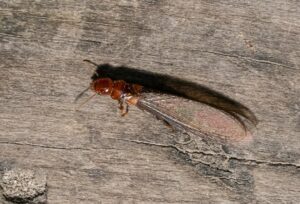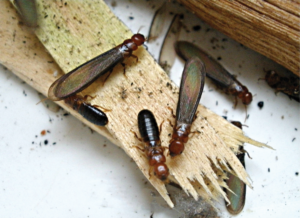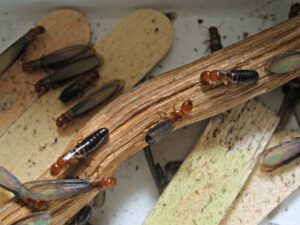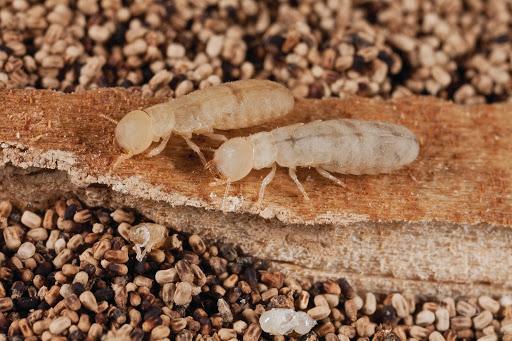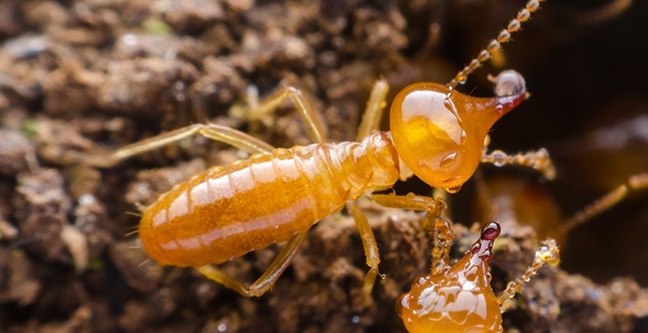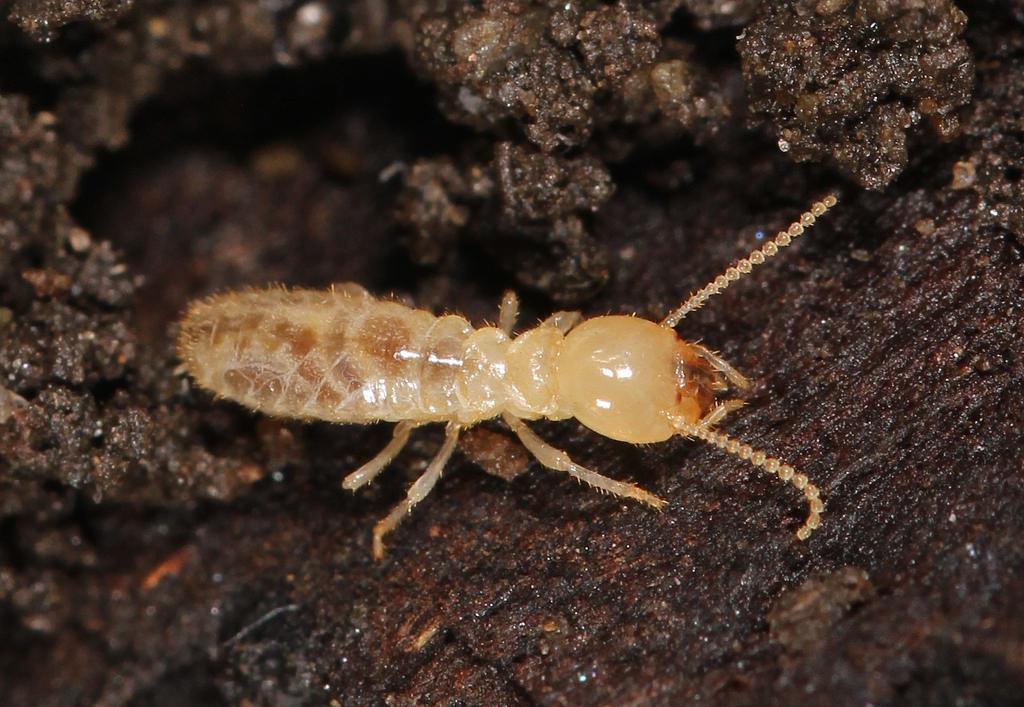Western Drywood Termite (Incisitermes minor)
Updated on
17/11/2022The western drywood termite is a dangerous pest in the United States. This termite infests wooden structures from within, including man-made structures like houses. It causes about $250 million worth of damage in Arizona and California alone.
Scientific Classification
- Class:Insecta
- Order:Isoptera
- Family:Kalotermitidae
- Genus:Incisitermes
- Species:I.minor
Conservation Status
Description
A typical colony consists of alates or swarmers who possess wings, soldiers that protect the nest, and the pseudergates, false workers who can change into males or females by molting. The alates have orange-brown heads and pronotums, with a long, dark brown abdomen about 0.43-0.49 inches long. Soldiers are 0.31-0.47 inches long, weigh between 20 and 25 mg and have a reddish-brown coloration. They have two teeth on the left mandible and a more significant third antennal segment. The pseudergates are dark brown with an orange head.
Distribution: Native – In the United States, Baja California, central Arizona, northern California, Oregon, Sonora, and Washington
Invasive – In the United States, Arkansas, Florida, Georgia, Iowa, Louisiana, Maryland, New Jersey, New York, Oklahoma, Ohio, and South Carolina. Also, Australia, China, and Japan
Habitat: Areas with dry climates and access to wood
Do They Bite/Sting: No
Lifespan: Pseudergates/Soldiers: 1-2 years; Queen: 10-12 years
Predators: Ants, arachnids like crab spiders and scorpions, centipedes, cockroaches, crickets, dragonflies, roundworms, and wasps
Behavior and Characteristics
Colonies
They have a eusocial caste system. It takes a long time for a colony to fully develop – around 5-7 years.
Food Collection and Consumption
Western drywood termites feed on both living and dead wood. They excavate inside the infected wood, but no signs of infestation can be observed from the outside.
The Douglas fir is a favorite of these termites. They prefer feeding on wood where the colony has built a nest and avoid repellent or chemical-laced wood.
Life Cycle
These termites reproduce by swarming. This involves alates flying to a location, shedding their wings, and looking for a partner. Since they are not excellent fliers, they swarm close to their point of emergence.
Once female termites bond with a male, they are mated for life. As the new king and queen, they form a new colony, starting with constructing a royal cell. This requires them to find a piece of wood with a hole in it and excavate it. After 3-4 days, they will plug the hole with the regurgitated contents of their stomach.
1. Egg Stage
After a nine month period of inactivity, the queen lays eggs. This generally occurs from late spring to late fall. In the 1st year, she will lay 2-5 eggs. Her fecundity increases with each passing year, with 8-15 eggs produced in the 2nd year. She eventually slows down in the 10th or 12th year.
2. Nymph Stage
The nymphs hatch after nine months and are initially cared for by their parents. This continues until they are capable of excavating wood by themselves. Generally, it takes a year for nymphs to fully mature into adults, during which they go through seven instars. Each instar involves them molting and assuming different body shapes.
3. Adult Stage
Over time the ovaries of the queen enlarge, and their abdomen begins to swell. The kings do not undergo any drastic morphological change. As the nymphs grow into adults, they become soldiers or turn into alates and leave the nest to form colonies.
Damage Caused by Them
Western drywood termites are the most destructive termites in the western part of the United States. As most of their damage occurs in the interior of wooden structures with the exterior remaining intact, it is difficult to ascertain whether an infestation has occurred. This leads to the impression of the wood appearing strong, though it is weak from the inside.
Getting Rid of Western Drywood Termites
While fumigating wooden structures with Sulfuryl fluoride will kill termite colonies, using harmful chemicals with long-term effects is discouraged in urban areas. Other options include blasting hot air, applying liquid nitrogen into the infected wood, using a microwave-emitting device to “cook” them, or delivering an electric shock with a low-current, high-voltage “gun”.
If such extreme measures are not preferred, it would be best to isolate and replace possibly infested parts of a wooden structure to prevent the infection from spreading.
Source
bugguide.net, pctonline.com, inaturalist.ca, calphotos.berkeley.edu




